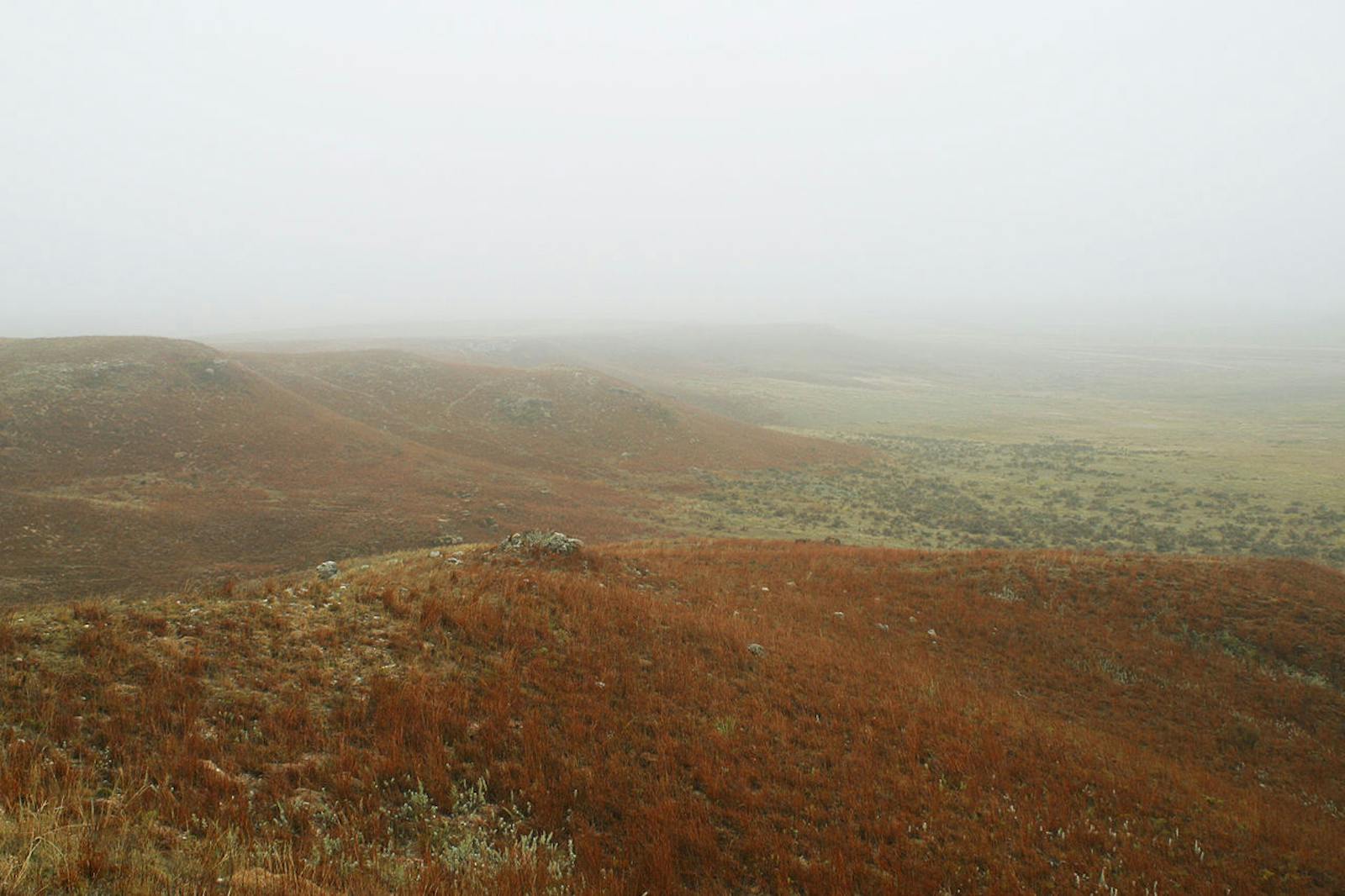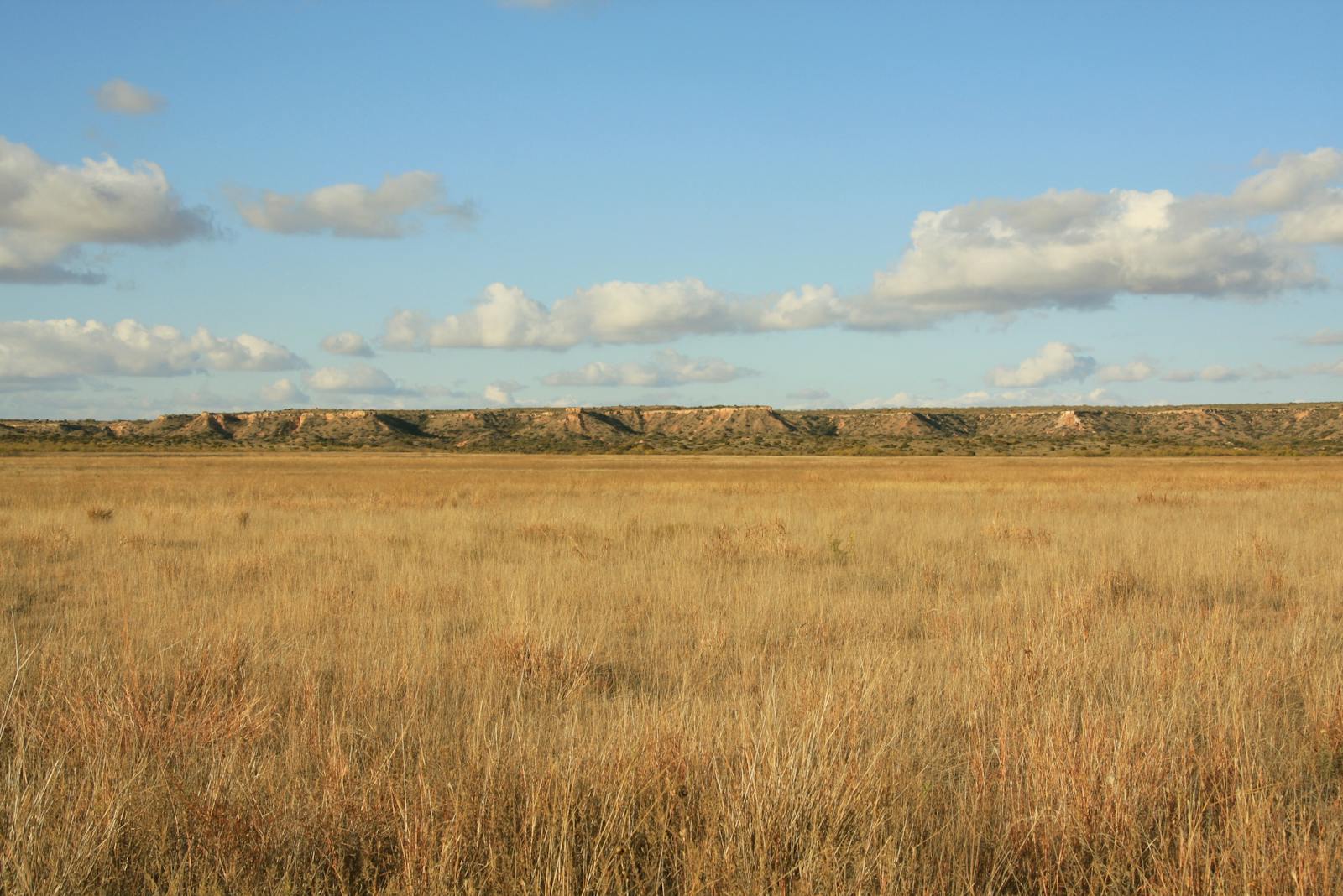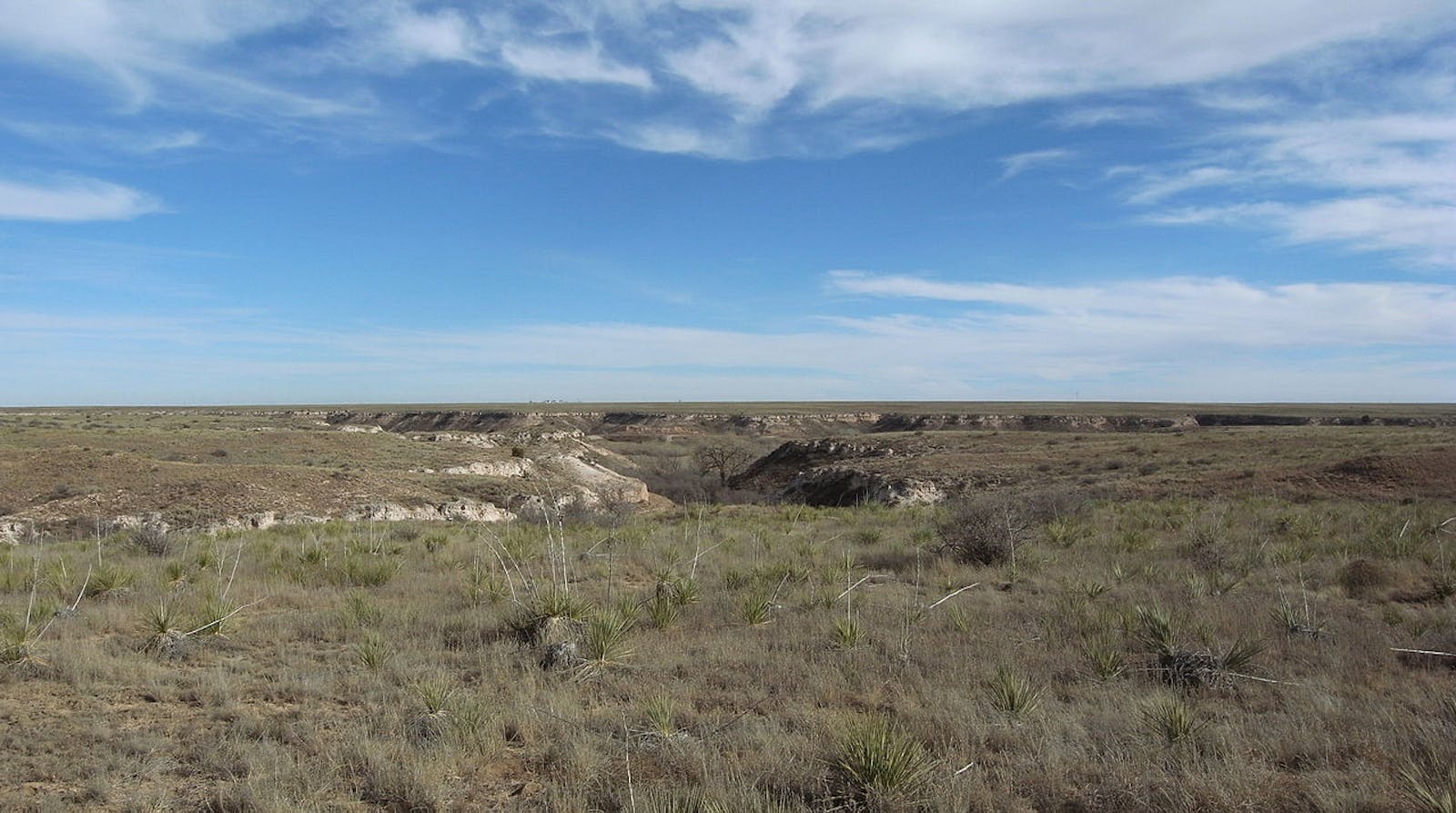Western Shortgrass Prairie
The ecoregion’s land area is provided in units of 1,000 hectares. The conservation target is the Global Safety Net (GSN1) area for the given ecoregion. The protection level indicates the percentage of the GSN goal that is currently protected on a scale of 0-10. N/A means data is not available at this time.
Bioregion: Southern Prairie Mixed Grasslands (NA20)
Realm: Northern America
Ecoregion Size (1000 ha):
48,808
Ecoregion ID:
402
Conservation Target:
50%
Protection Level:
0
States: United States: TX, OK, NM, KS, CO, NE, WY
The Western Shortgrass Prairie is the second largest grassland ecoregion in North America, stretching from Texas and New Mexico in the south to Nebraska and Wyoming in the north. This geographical region is commonly known as the High Plains.
The ecoregion’s southern boundary is with the Edwards Plateau Savanna, Chihuahuan Desert, and Arizona Mountain Forests ecoregions; its western boundary is with the latter two ecoregions as well as the Colorado Rockies Forests ecoregion; its northern boundary is with the Northern Shortgrass Prairie ecoregion; and its eastern boundary is with the Central-Southern US Mixed Grasslands ecoregion.
Most of the Western Shortgrass Prairie is occupied by private farms and ranches. Many years of unsuccessful attempts at dryland cultivation resulted in severe loss of topsoil in this ecoregion, which was the center of the Dust Bowl of the 1930s. Some important protected areas have been established, most notably the Pawnee National Grassland in Colorado, but less than 1% of the ecoregion is protected. Surprisingly, however, some 56% of the habitat outside of protected areas, almost all of it private land, remains essentially intact. This is a much higher level of intactness than many other grassland ecoregion in North America.
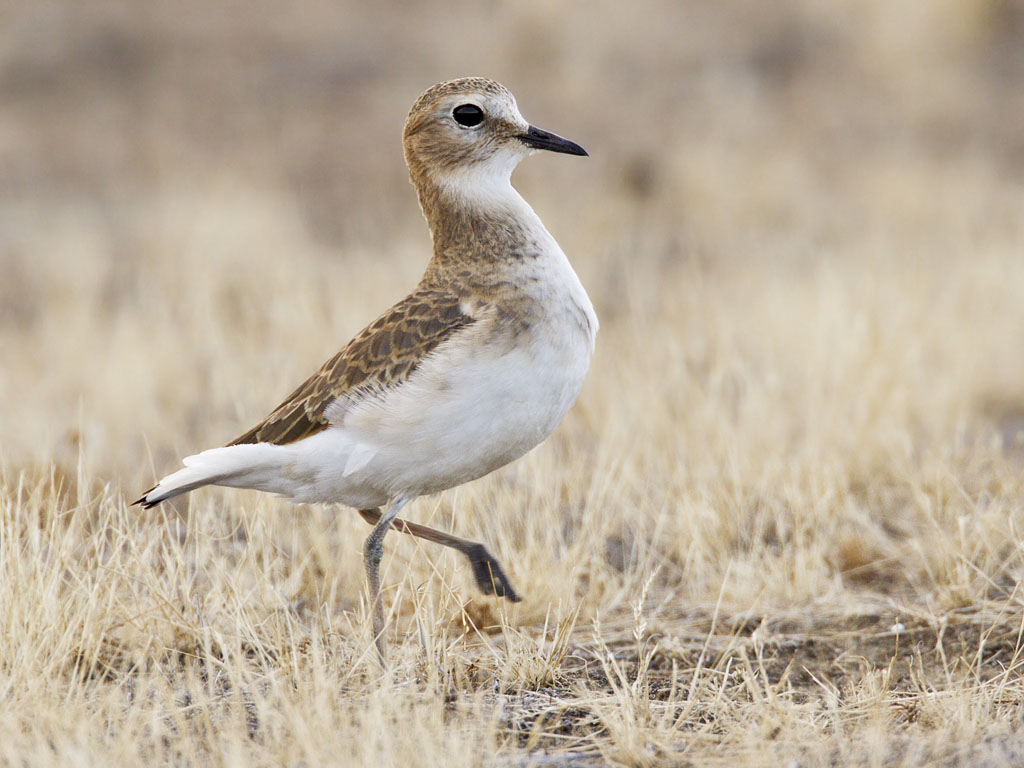
The flagship species of the Western Shortgrass Prairie ecoregion is the mountain plover. Image credit: Creative Commons
The climate of the Western Shortgrass Prairie ranges from subhumid warm temperate and semiarid warm temperate in the south to subhumid warm continental and subhumid cold temperate in the north. Average annual precipitation ranges from around 250 mm to 630 mm. Severe droughts in late summer are not unusual.
The natural vegetation is predominantly sod-forming perennial grassland, which is well adapted to grazing by large herbivores but less so to fire—in contrast to more mesic grasslands. The dominant grasses are blue grama and buffalograss. Another vegetation type within the ecoregion is mixed prairie with needle and thread grass, western wheatgrass, and June grass, along with blue grama and buffalograss. Little bluestem also occurs locally.
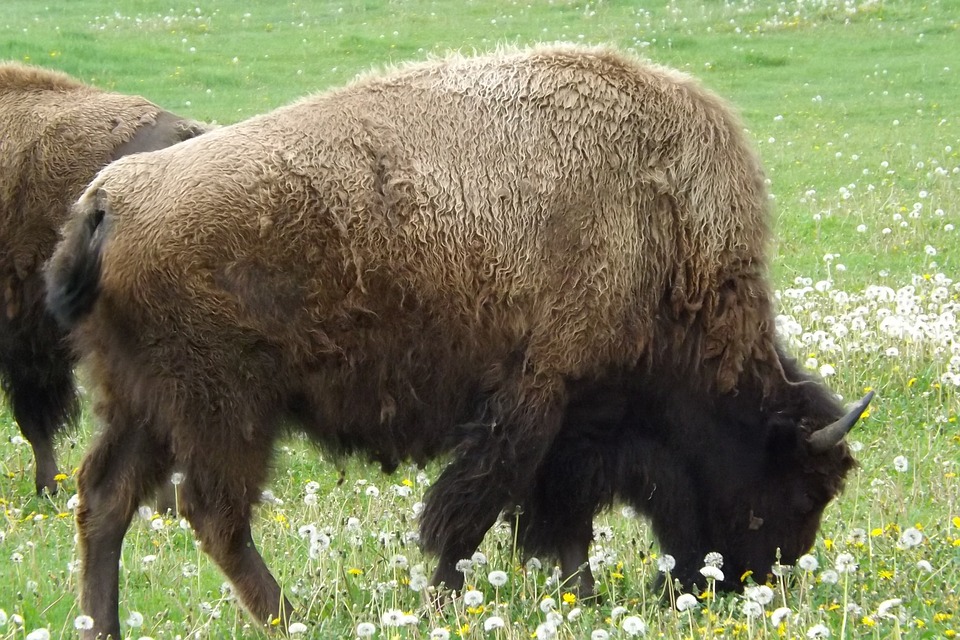
Plains bison. Image credit: Creative Commons
Some landscapes in the southern part of this ecoregion, especially in Texas, have been invaded by mesquite and various thorny shrubs, to the point of limiting grass production. The reasons for the invasion are controversial but overgrazing by domestic livestock appears to be the primary cause. Lack of fire and CO2 enrichment have probably also contributed to the invasion.
This ecoregion once was home to huge herds of bison. Although some bison farms exist here, self-sustaining, free-roaming bison herds have been eliminated. Another keystone species, the black-tailed prairie dog, once probably the most abundant mammal across the ecoregion, has greatly declined due to a combination of habitat lost, unregulated eradication effort, and the sylvatic plague.
The Plains grizzly bear and wolf have been completely exterminated from the region. Other characteristic mammals include pronghorn, elk, white-tailed deer, and coyote. Reptiles include short-horned lizard and prairie rattlesnake. Some characteristic birds of this ecoregion are prairie falcon, northern harrier, Swainson’s hawk, burrowing owl, mountain plover, marbled godwit, greater and lesser prairie-chicken, scaled quail, loggerhead shrike, horned lark, Cassin’s sparrow, Brewer’s sparrow, lark sparrow, grasshopper sparrow, lark bunting, and western meadowlark. Unfortunately, this and other grassland ecoregions have suffered the most severe bird population declines of anywhere in North America.
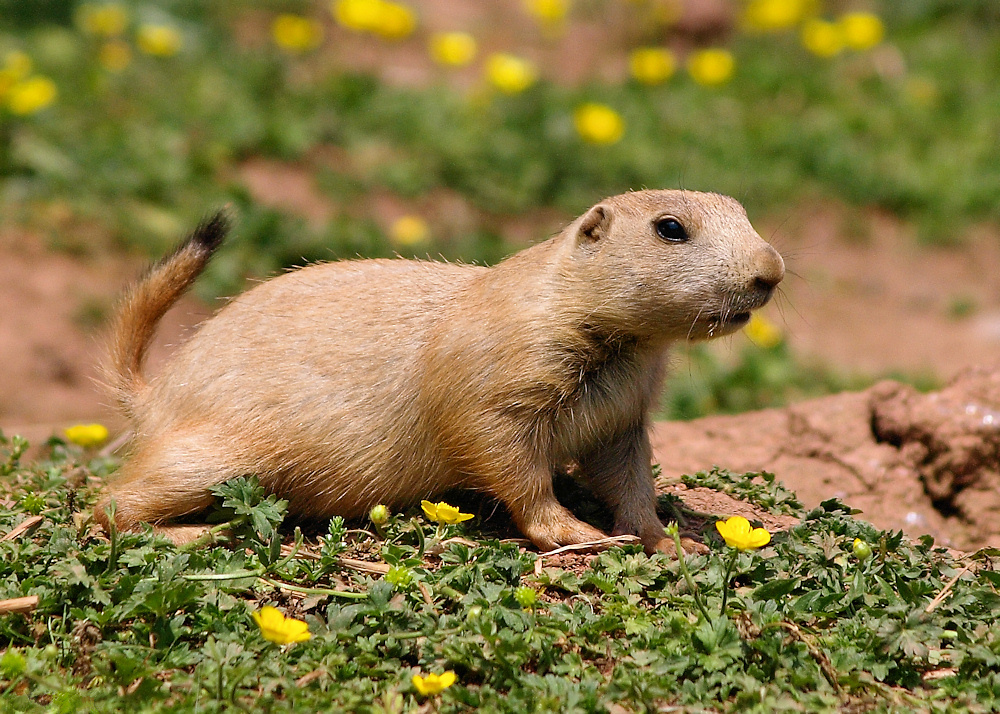
Prairie dog. Image credit: Steve Polkinghorne, Creative Commons
Dryland farming and intensive livestock grazing have taken a great toll on the Western Shortgrass Prairie. Extensive cultivation of crops is not possible in this dry ecoregion without heavy irrigation, which depletes the aquifer. Acquisition of private land and designation of large protected areas must occur before additional disastrous attempts at dryland farming are initiated. Urbanization, especially around Denver and other areas of the Rocky Mountain Front in Colorado, is also a threat.
Priority conservation actions for the next decade are: 1) greatly expand the network of protected areas; 2) reduce livestock grazing and prevent agricultural expansion; and 3) recover populations of imperiled species, including prairie dogs, bison, grizzly bear, and gray wolf.
Citations
1. Ricketts, T.H. et al. 1999. Terrestrial Ecoregions of North America: A Conservation Assessment. Island Press, Washington, D.C.
2. Shortgrass Prairie. https://en.wikipedia.org/wiki/Shortgrass_prairie
3. Pawnee National Grassland. https://en.wikipedia.org/wiki/Pawnee_National_Grassland
